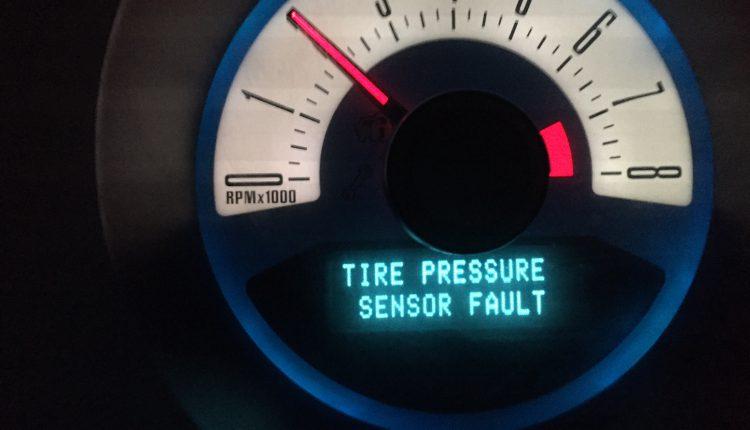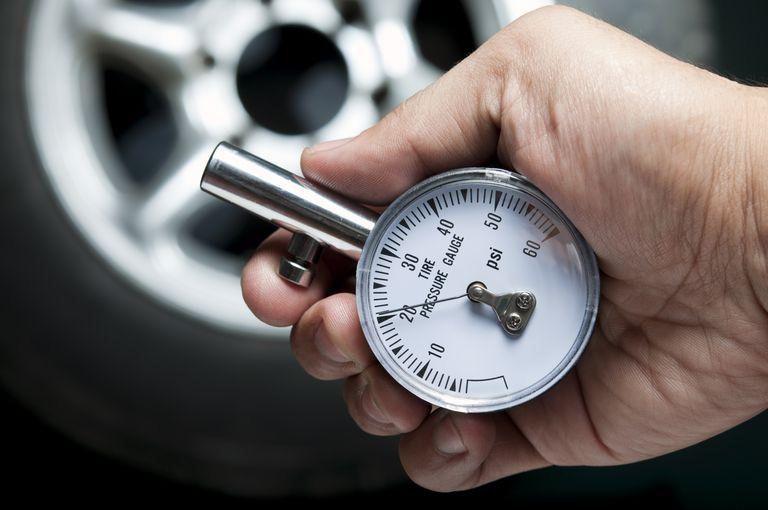Seeing the message tire pressure sensor fault on the instrument cluster while driving the car is pretty common. Do you know how serious is the problem and how much it will cost to replace tire pressure sensor?
All automobiles manufactured after 2007 require a TPMS or tire pressure monitoring system. The system has sensors that monitor the level of pressurized air inside the tires. The sensors provide real-time information about the tire pressure.
Contents
What Does Tire Pressure Sensor Fault Mean?
The message regarding faults in the pressure sensors indicates a problem with one or more of the tire pressure monitoring system (TPMS) sensors in a vehicle. TPMS sensors are installed in the tires and are responsible for monitoring the air pressure levels. They send signals to the vehicle’s computer system, which then displays the tire pressure readings on the dashboard.

Read more:
The error code tells whether the pressure sensor is faulty or the air pressure in the tires is too high or too low.
When the tire pressure sensor is going too bad, it will provide inaccurate readings. A defective TPMS control unit or frayed wiring could be the culprit too. Sometimes, you can fix the problem
Just by resetting the TPMS but replacement is the only option in some cases.
Symptoms Of A Faulty Pressure Sensor
The sensor is an electrical component so it can be damaged for plenty of reasons like age, dirt heat, and irregular power supply. Some of the high or low tire pressure sensor fault symptoms are:
1. Incorrect readings
One of the primary indications of a faulty pressure sensor is incorrect or inconsistent pressure readings. The sensor may provide readings that are significantly higher or lower than the actual tire pressure. This can be observed through the tire pressure monitoring system (TPMS) display on the dashboard or with a separate tire pressure gauge.
2. A warning light on the dash
A malfunctioning pressure sensor can trigger the TPMS warning light on the dashboard. The warning light may appear as a symbol resembling a tire with an exclamation mark or the letters “TPMS.” This light generally indicates a fault in the tire pressure monitoring system.
3. False alarm
The car dashboard continuously shows warning alerts (indicating low tire pressure when the tires are actually properly inflated) but the tire is still in a normal condition. In addition, it is possible that when the tire pressure and temperature change, the parameters displayed on the screen remain unchanged.
4. Inconsistent behavior
A malfunctioning pressure sensor can cause irregular behavior in the TPMS. For instance, the readings may fluctuate frequently or display different values each time the vehicle is started or during driving.
When the tire pressure sensor is faulty, the driver can handle this problem by resetting or replacing the sensor. If the sensor does not receive the signal, you should replace the sensor valve with a new one. To know more about detailed steps, let’s move to the next part to find out:
How To Fix Tire Pressure Sensor Fault?
Check tire pressure manually
Before starting the repair process, you have to make sure that all the tires have the correct air pressure. There’s a label behind the driver’s door that shows the right tire pressure for your car. You can find the same information in the repair manual. Check the tires with a pressure gauge to find out if they have the right level or air pressure.
In the case of overinflation, release some air until it falls to the correct level. Pump up air if the tires are underinflated. Fill up with a bit more pressure than mentioned in the label when the tires are warm because high temperatures lower the label of pressure.
For example, if the tire pressure label says 240 kpa, the TPMS will show an error code when the pressure goes below this level. If you fill the tire up to 240 kpa when the tires are hot, the pressure may go down to 220 kpa when they are cold.
The repair manual to see how to reset the TPMS in your car. Some models have a reset button. Just push it after filling up the tires with the correct pressure. You may need to drive some cars for at least 15 minutes for the warning lights to go off.
Inspect the tire pressure sensor

Visually inspect the tire pressure sensors for any visible damage, such as physical impact, corrosion, or loose connections. Ensure that the sensors are securely mounted on the valve stems of the tires. If the tire pressure sensor is found to be faulty and cannot be repaired, it may need to be replaced. Faulty sensors typically require professional assistance to ensure proper installation and calibration. A qualified technician can diagnose the faulty sensor using specialized diagnostic tools and replace it with a new sensor if necessary.
Replace the sensor battery
Generally, the average lifespan of the sensor battery will last from 2 to 6 years depending on the position of the sensor valve. After this period of time, if the sensor valve does not transmit data to the car dashboard, your sensor may have run out of battery. When the sensor valve runs out of battery, the letter “L0” will appear at the parameter display position corresponding to that valve’s position. A sign that the tire pressure sensor is out of battery is that one or more sensors do not send a signal to the controller. So If the tire pressure sensor uses a replaceable battery, it may be necessary to replace the battery.
Watch more:
The Cost Of Replacing Tire Pressure Sensor
The problem persists sometimes despite resetting the system. This could happen due to a damaged sensor. In that case, you have to take the car to a repair shop and have the sensor replaced with a new one.
The price of a sensor could be anything between $150 and $270. Add an extra $75 to $150 as labor costs. The total repair expenses will be from $200 to $440.



